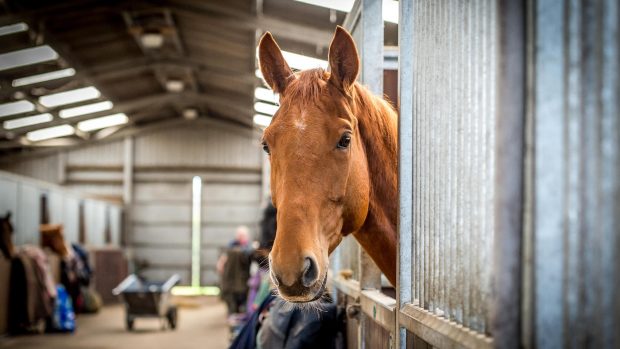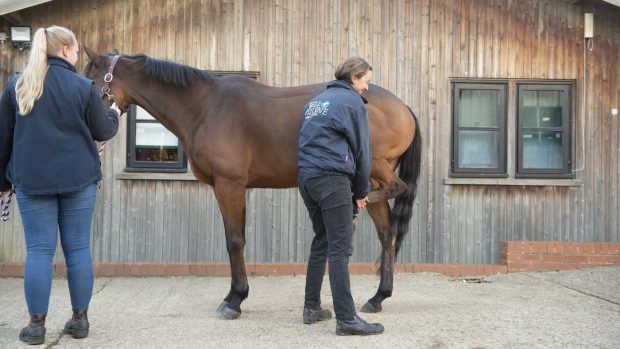The British Equine Veterinary Association (BEVA) commissioned a review of the five-stage pre-purchase examination (PPE) in 1999. Five years on, the committee is finalising a solution to satisfy the combined requirements of purchasers, insurers, vendors and vets.
The most revolutionary change in the committee’s proposals involves the introduction of vendor warranties alongside the five-stage examination.
“There may be changes involving declarations from vendors and what they can legally be obliged to say, which could be a major plus from the purchaser’s point of view,” says committee chairman Jeremy Mantell, a former BEVA president and vet at Liphook Equine Hospital.
“The likely scenario is that it would be up to vets to inform purchasers that they can obtain such a warranty and there will be a standard form, available from a designated body. Legally it would be strictly between vendor and purchaser, which is as the situation stands at the moment.”
Currently, many vets encourage buyers to compile a questionnaire or declaration for the vendor to answer, covering areas that may not be detectable as part of the exam, such as allergies, so-called vices and previous vet history. As well as reassuring the purchaser, it helps curb the potential for litigation by clarifying what is the vet’s, and what is the buyer’s, responsibility to verify.
The review committee has also issued new recommendations on the use of flexion tests and lungeing on a firm surface as part of the examination. Although many vets already incorporate these as standard, they have remained a contentious issue.
“We’re not going to make them mandatory. If you’re vetting at a yearling sale, it’s not going to be practical,” explains Mantell. “The vet will have the option to say they didn’t perform the test, but will be expected to explain why, and the likely implications, to the purchaser.
“We’re also reinforcing the point that these tests are not screening techniques but an aid to diagnosis to exacerbate or confirm something one already suspected. One lame step doesn’t equal a failed horse.”
Svend Kold, an orthopaedic specialist with many years’ experience of vetting horses in Europe, believes Britain has one of the most extensive vetting procedures.
“I think we have the gold standard here in the UK,” he says. “In Europe, we don’t have the five-stage vetting procedure. Vets don’t have to see horses strenuously exercised or ridden and they don’t do lungeing on hard ground or the things we take for granted.”
The current five-stage examination does not aim to “pass” or “fail” a horse, but completes an assessment “on the balance of probabilities” that the conditions observed by the vet are, or are not, likely to prejudice the animal’s suitability for the purchaser’s intended use.
“Buyers need to be aware that the pre-purchase examination is a snapshot in the life of that horse and doesn’t provide any guarantees — it’s a risk assessment,” says Karen Coumbe, Horse & Hound’s veterinary adviser. “The vet examining the horse may attend without knowing anything about the horse or its past history. Vets can only go on what they’re told, and have to base their opinion on what they see on that day.”
As Jeremy Mantell explains: “Whether it’s an £800 pony or a £80,000 eventer, the examination should be fundamentally the same, but the interpretation of any findings may well differ.”
Many vets prefer buyers to be present at the vetting, to discuss concerns or findings and assess how they may relate to the purchaser’s specific requirements. It is also vital that the vendor can provide adequate facilities — including a hard trot-up area and room for strenuous work.
Another perennial problem at vettings is that some common conditions can be notoriously difficult to detect in the 1-2hr window. Intermittent back pain and seasonally aggravated allergies such as sweet itch, mud fever or stable coughs due to dust allergies are among the most obvious, though sometimes more serious problems may not show any clinical signs at the time of the assessment.
“In autumn and winter, when a lot of horses are vetted, a number of conditions may not show up,” says Franklin. “The horse’s mane and tail may look fine until the weather warms up, when it starts rubbing its hair off. The vet can’t be expected to know — which is why the purchaser should seek a warranty or declaration.”
Ultimately, purchasing a horse will never be without risk, and a pre-purchase examination is just one of the ways in which buyers can attempt to mitigate it. Trying the horse thoroughly under saddle and in the stable, obtaining a warranty, checking its competition record and insuring the purchase are all ways to protect the buyer from loss. No one should expect the vet to have a crystal ball.




